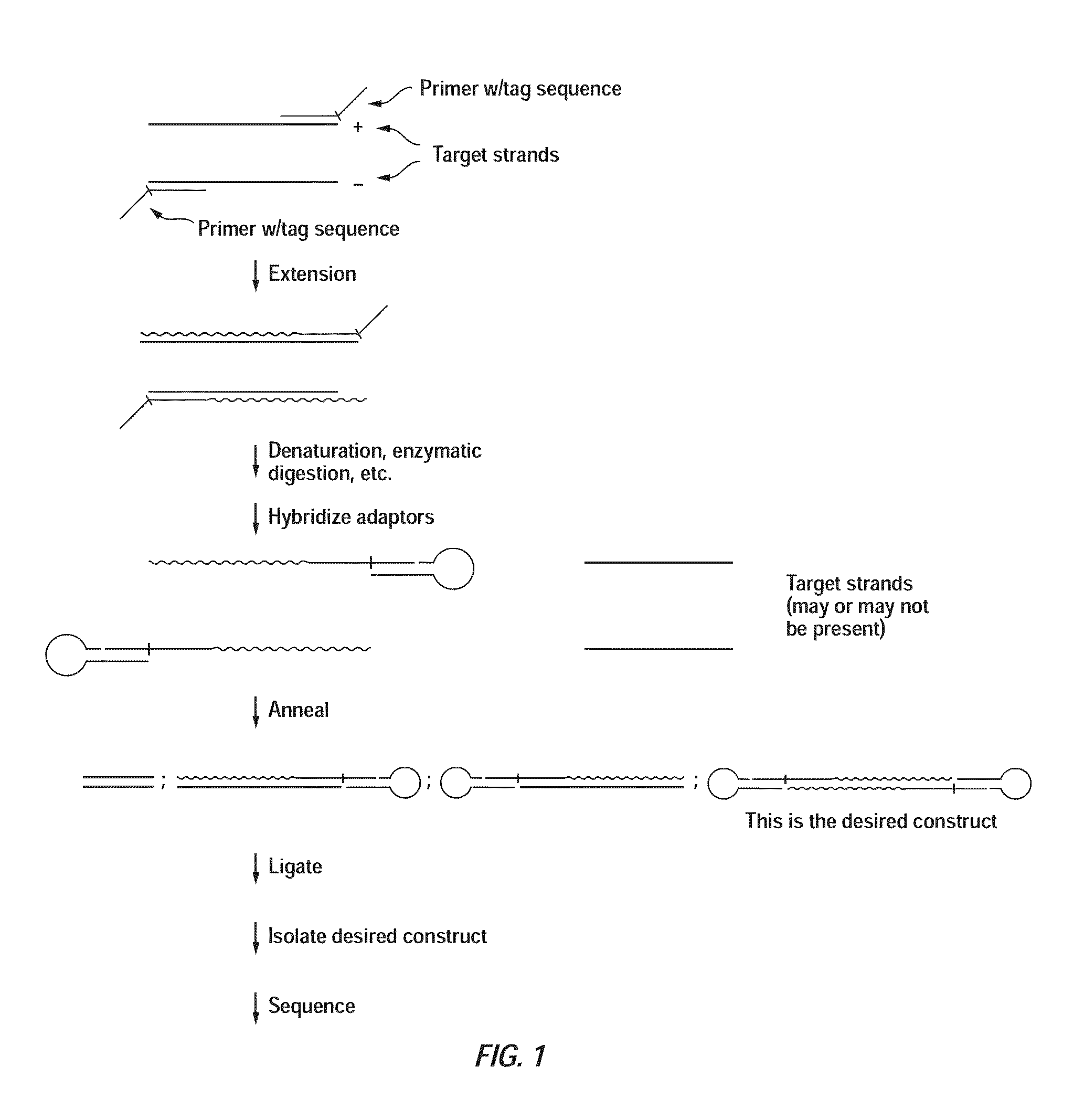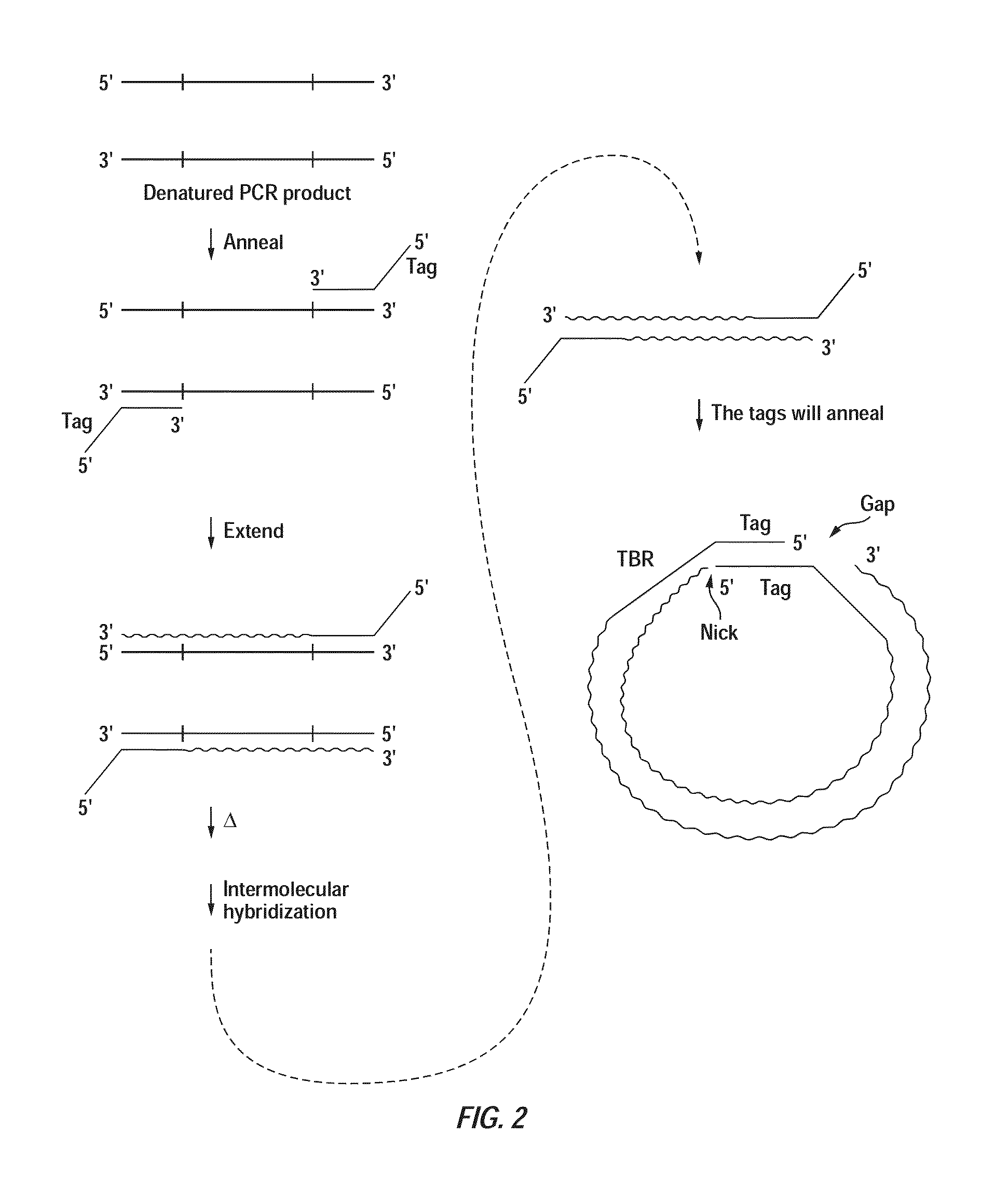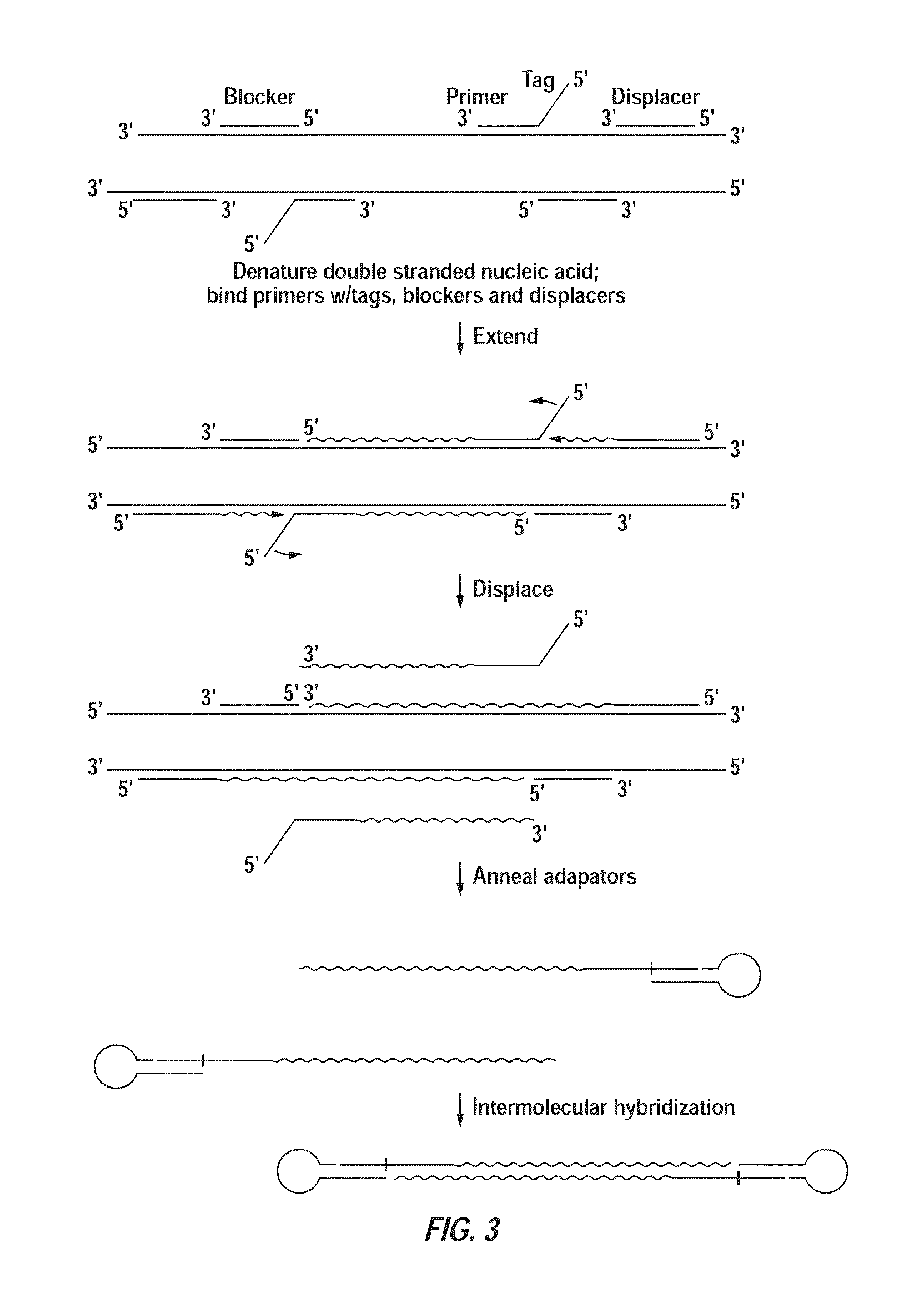Closed nucleic acid structures
a nucleic acid structure and closed technology, applied in the field of closed nucleic acid structure, can solve the problems of low efficiency, complex structure formation and time-consuming, and inability to synthesise such structures, and achieve the effect of ligation rapid
- Summary
- Abstract
- Description
- Claims
- Application Information
AI Technical Summary
Benefits of technology
Problems solved by technology
Method used
Image
Examples
example 1
Generation of a Closed Template for Sequencing from a Target Nucleic Acid
[0371]This example describes the preparation of a closed template for sequencing from a target nucleic acid selected by the user. For example, DNA or RNA from human, animal, plant, viral, bacterial, fungal or viral sources can be used. For purposes of describing this example (and not meant as a limitation), human genomic DNA (hgDNA) is used. For further purposes of example, PCR is used to amplify a targeted region of the hgDNA. Other amplification methods can be used, and a procedure without amplification can also be utilized.
[0372]First, hgDNA is isolated from whole blood (or other source) by any conventional method (e.g., QIAamp DNA Mini kit from Qiagen). Next, an aliquot of the DNA is amplified using PCR. The primers each include a 5′ region and a cushion region that do not hybridize with the target nucleic acid. The primers also each include a 3′ region that hybridizes with the target nucleic acid. Thus, th...
example 2
Generation of a Closed Template for Sequencing from a Target Nucleic Acid, Shorter Protocol
[0379]The materials and protocols for this example are the same as Example 1 above through the step of generating overhangs. At that point the protocol changes in that some of the steps are combined.
[0380]After generation of the overhangs using T4 Polymerase and inactivation of the enzyme via incubation at 70° C. for 10 minutes, an approximate 2-fold molar excess over the PCR amplicon of the first (SEQ ID NO:5) and second (SEQ ID NO:6) adaptors as well as T4 DNA Ligase are added to the reaction mixture. The mixture is then incubated at 25° C. for 30 minutes.
[0381]Excess adaptors and template that failed to completely ligate are removed by treating the reaction mixture with Exonucleases III and VII for 1 hour at 37° C. Closed template is then purified by a conventional method (e.g., AMPureXP® kit). Purified templates are quantitated if necessary using a Qubit fluorometer. Further analysis is pe...
example 3
Generation of a Closed Nucleic Acid Structure from a Target Nucleic Acid
[0383]This example describes the preparation of a closed nucleic acid structure from a target nucleic acid according to Method 21. A 765 bp amplicon of the 5′ LTR region of HIV was amplified from a plasmid by PCR. The PCR used 5′ phosphorylated primers targeting the plasmid sequence at flanking ends of the inserted 5′ LTR sequence (SEQ ID NOs:7 & 8). The amplification reaction mixture was generated using Phusion® High-Fidelity DNA Polymerase kit (New England Biolabs, U.S.A., Cat# M0530L) according to manufacturer's instructions. Following amplification the resulting amplicon was purified using a QIAquick PCR Purification kit (Qiagen, U.S.A., Cat# 28106). An aliquot containing 5 micrograms of the purified amplicon was combined with two 3′ blocked oligonucleotides having 3′ segments identical to the PCR primers used in the initial amplification step except that a reverse polarity C was added to the 3′-end of each ...
PUM
| Property | Measurement | Unit |
|---|---|---|
| temperatures | aaaaa | aaaaa |
| temperature | aaaaa | aaaaa |
| temperature | aaaaa | aaaaa |
Abstract
Description
Claims
Application Information
 Login to View More
Login to View More - R&D
- Intellectual Property
- Life Sciences
- Materials
- Tech Scout
- Unparalleled Data Quality
- Higher Quality Content
- 60% Fewer Hallucinations
Browse by: Latest US Patents, China's latest patents, Technical Efficacy Thesaurus, Application Domain, Technology Topic, Popular Technical Reports.
© 2025 PatSnap. All rights reserved.Legal|Privacy policy|Modern Slavery Act Transparency Statement|Sitemap|About US| Contact US: help@patsnap.com



